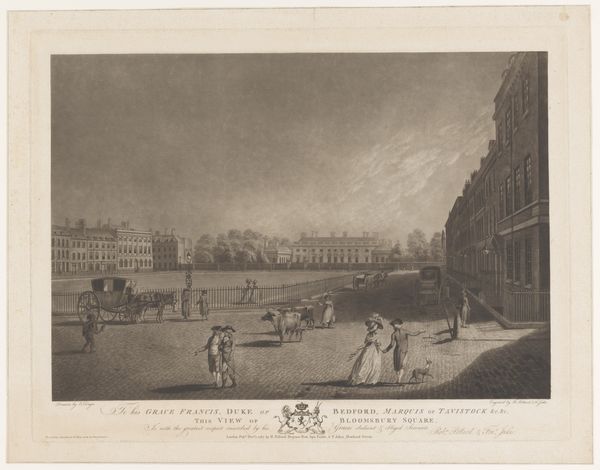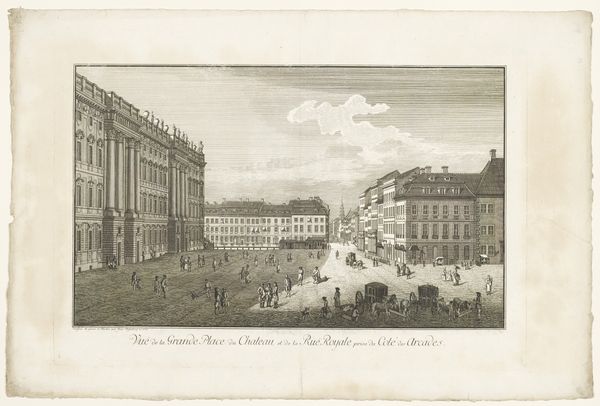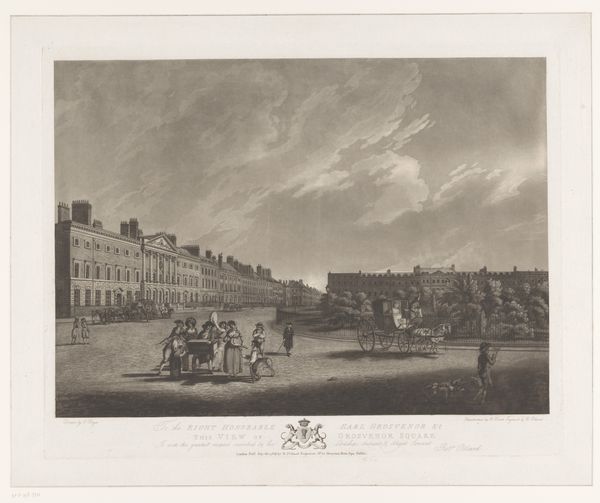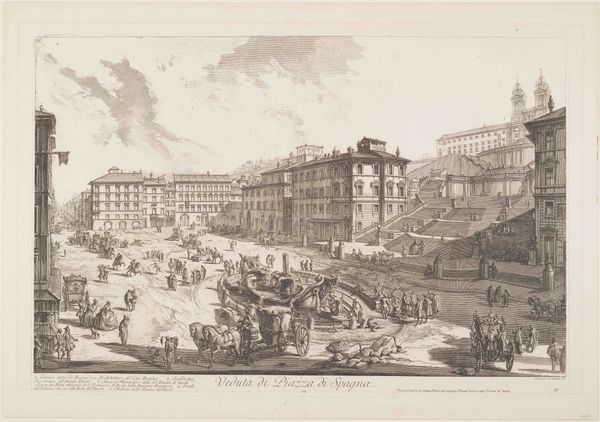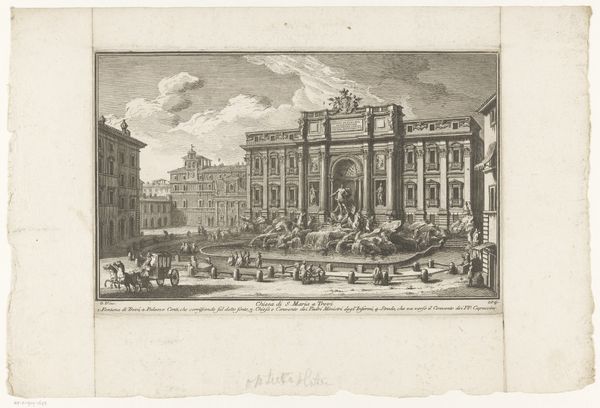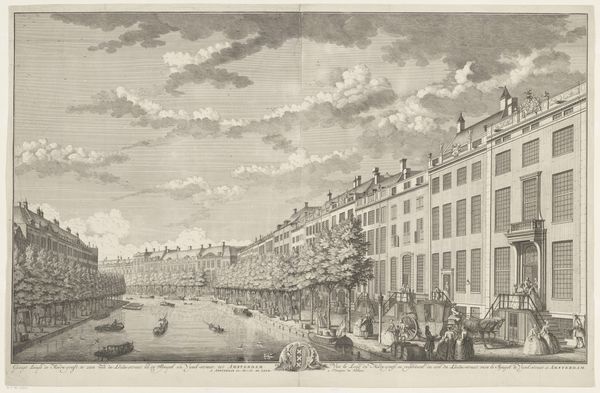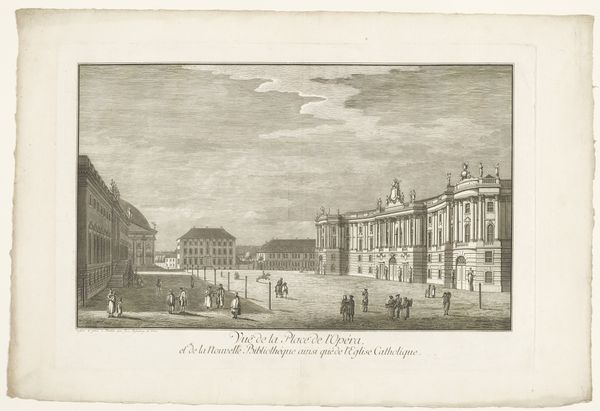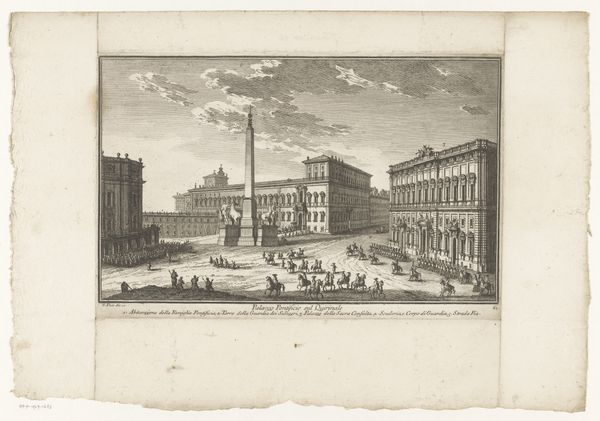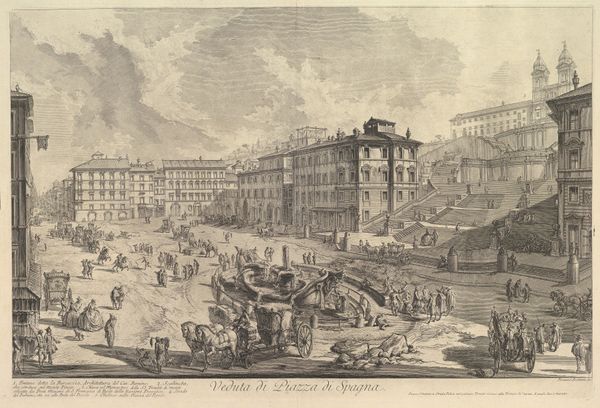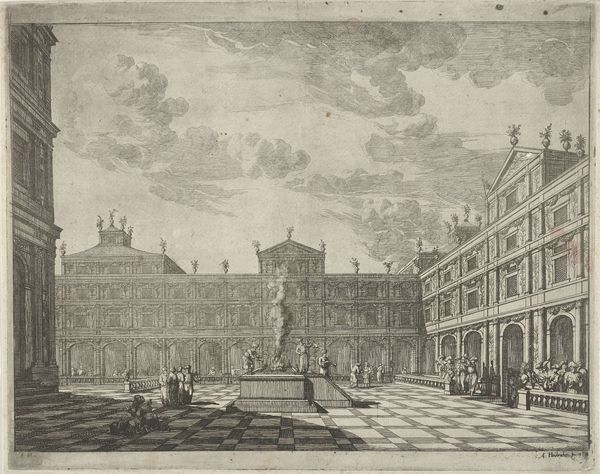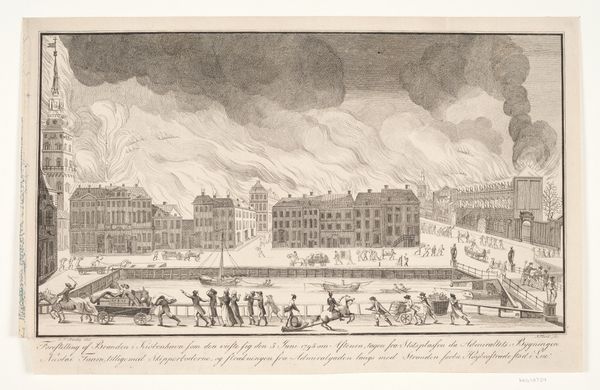
print, engraving
#
neoclacissism
# print
#
old engraving style
#
landscape
#
15_18th-century
#
square
#
cityscape
#
engraving
Dimensions: height 441 mm, width 580 mm
Copyright: Rijks Museum: Open Domain
Editor: Here we have Robert Pollard's "View of Hanover Square" from 1787, an engraving. I’m struck by the ordered precision, the way the buildings frame the square. It feels… contained, almost like a stage set. What do you see in this piece, something more perhaps? Curator: Indeed. While seemingly a simple topographical depiction, consider Hanover Square itself – it’s a relatively new public space at this point, built to visually represent Hanoverian power and stability. Look at how the artist emphasizes the neoclassical architecture, echoing ancient Roman ideals of order and governance. This visual language becomes part of the cultural memory. The square, in this rendering, isn't just a place; it’s a symbol of civic virtue. Editor: So, the buildings themselves become symbols? And the layout? Curator: Precisely. Think about squares more broadly; historically, they've been focal points for civic life - marketplaces, public announcements, sometimes even executions. This one, however, projects a specific kind of power. Its planned nature contrasts with the chaos and spontaneity of older cities, doesn’t it? Note also the tiny figures. Editor: I see, they’re not individualized at all! Everyone is simply playing a role, performing civic life. Curator: Yes. And even their attire, though subtly indicated, reinforces social hierarchy. Can you see any of these forms recurring in our day and age? Think of the layout, architecture, design. Where else in society do we find this? Editor: That’s fascinating, seeing how even a cityscape can convey such loaded messages. I will definitely be looking at squares differently going forward! Curator: It reveals the cultural assumptions embedded within our everyday surroundings. The lasting visual effect reinforces the norms. It prompts us to see the deeper narrative implied, like the square is performing.
Comments
No comments
Be the first to comment and join the conversation on the ultimate creative platform.
